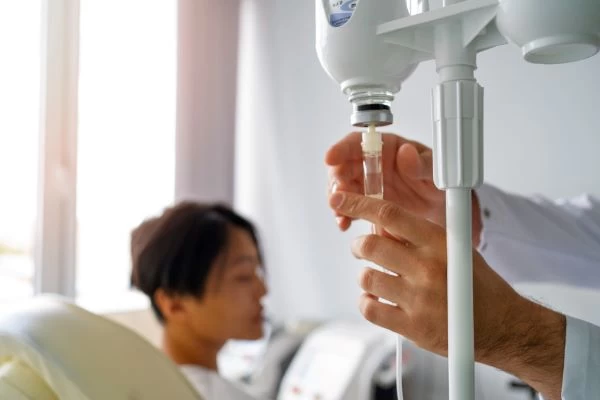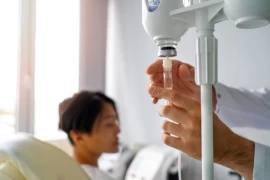
Why Have IV Therapies Become Necessary?
- Why Have IV Therapies Become Necessary?
- What is IV Therapy?
- Why Has the Need for IV Therapies Increased?
- What Are the Most Commonly Used Products in IV Therapies?
What is IV Therapy?
IV therapy, or intravenous therapy, has been widely practiced in Europe and America for the past 30 years, while it has only recently gained popularity in our country. The incorrect application by unqualified individuals often leads to ineffectiveness, causing many to question, "Is it really necessary?" However, when applied correctly, it is a proper treatment option that allows us to achieve results quickly. So, why has the need for IV therapies increased? Let's explore together.
Why Has the Need for IV Therapies Increased?
Our intestines act as a barrier between the external world and our body. Under normal circumstances, they allow the passage of necessary vitamins, minerals, water, fatty acids, amino acids (the building blocks of proteins), and glucose, while blocking harmful substances, which are then excreted from the body. HOWEVER, ONLY 1 OUT OF EVERY 12 PEOPLE HAS GOOD GUT HEALTH TODAY. The remaining 11 suffer from chronic inflammation. Various factors in today's world, such as heavy metals, chemicals, chronic stress, electromagnetic radiation, infections, ultra-processed and genetically modified foods, and pesticides, cause chronic inflammation. This chronic inflammation damages the mitochondria, the energy factories within cells, resulting in reduced energy production and increased waste production. Think of it like a car engine that burns oil. Vital water and salt can easily pass between cells, but other vitamins, minerals, and amino acids pass through intestinal cells via an energy-requiring process. In cases of chronic inflammation and energy deficiency, absorption from the intestines decreases, making energy production even more difficult and exacerbating inflammation, creating a vicious cycle that ultimately leads to various diseases, from cardiovascular diseases, diabetes, liver diseases, neurological problems like Alzheimer's, Parkinson's, and MS, to cancer.
It is impossible to break this vicious cycle with oral supplements alone. Even under normal conditions, not 100% of orally taken vitamins and minerals are absorbed. For example, only 1 gram of Vitamin C can be absorbed from the intestines in one day, and when taken in large amounts, the absorbed amount drops to 500 mg. Similarly, only 5 mg of Vitamin B1 (Thiamine) can be absorbed from the digestive system. These values are quite low when we want to treat a disease, and these values are for healthy intestines. In such cases, IV therapies become the most effective treatment option.

What Are the Most Commonly Used Products in IV Therapies?
Regarding the most commonly used products in IV therapies, Vitamin C stands out. As the strongest extracellular antioxidant, Vitamin C is essential because it cannot be produced by the human body and must be obtained externally. When Vitamin C is insufficient, the likelihood of encountering many diseases, from chronic fatigue to cancer, increases. Sufficient Vitamin C makes it easier to remove heavy metals from the body and is necessary for the integrity of collagen tissue. Just as iron within the columns of a building provides structural integrity, Vitamin C ensures the strength of collagen tissue. High doses of Vitamin C are required in cancer treatment to support the therapy and reduce chemotherapy side effects, achievable only through IV therapies.
Other frequently used products include Glutathione and Alpha-Lipoic Acid. Although these can be produced by the human body, production decreases with aging, smoking, alcohol use, excessive sugar and processed food consumption, chronic stress, exposure to chemicals and heavy metals, and insufficient raw materials needed for production. In such cases, the best method is IV supplementation. They are valuable for eliminating intracellular toxins, preventing and treating diabetes and its complications, and supporting liver health. Additionally, many vitamins, minerals, and amino acids can be used IV for the prevention and treatment of conditions such as fibromyalgia, chronic fatigue, depression, anxiety, sleep problems, liver fat, diabetes, hypertension and heart diseases, neurological diseases like Alzheimer's, Parkinson's, and MS, acute infections, psoriasis, eczema, acne, hair loss, and nail problems, as well as for anti-aging purposes.
While many vitamins, minerals, and amino acids can be used individually in IV therapies, they can also be produced as special cocktails tailored to patient needs using compounding pharmacy methods. IV therapy planning is entirely personalized based on a comprehensive examination. Dosage and session intervals are selected according to patient needs. Treatment must be supported with other suitable therapeutic options and special diets. For more detailed information about the treatment protocol, please contact our clinic.
Wishing you healthy days,

Dr. Nalan Deniz BAŞTUĞ





